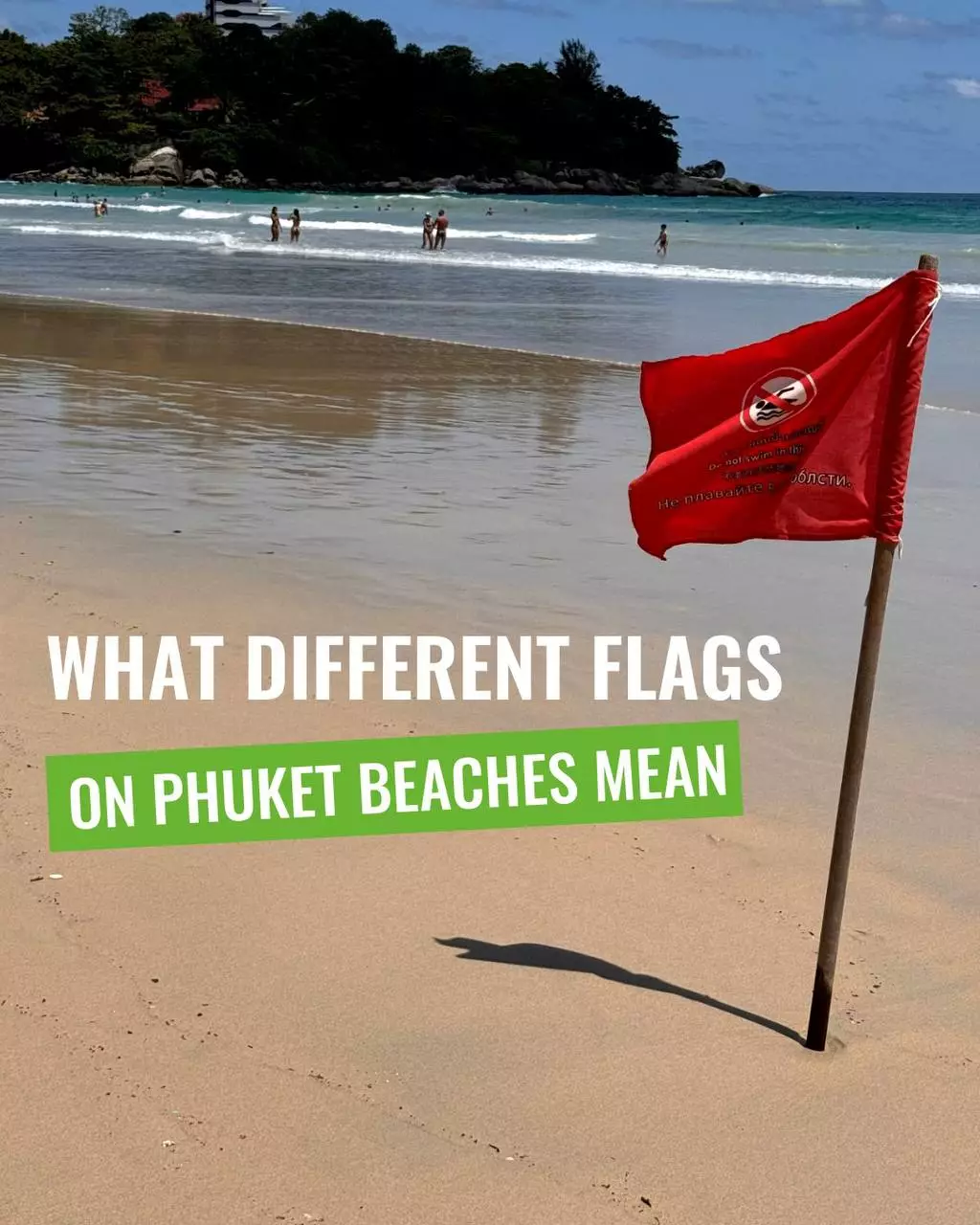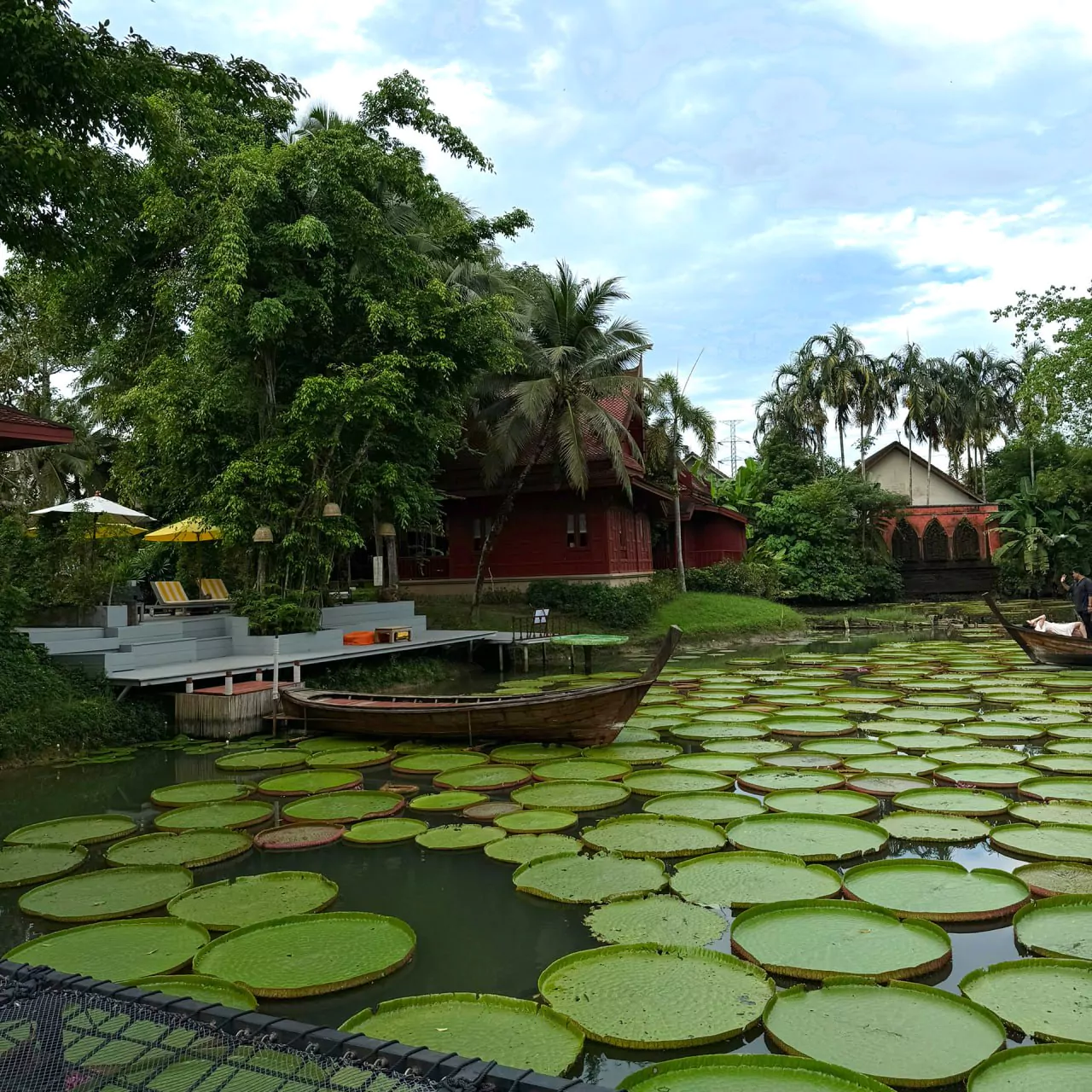What different flags on Phuket beaches mean
You’ve probably noticed that there are flags of different colors on the tourist beaches of Phuket. It’s essential to know what each of them means, primarily for your own safety. So, what do the colors of the flags on Phuket’s beaches signify?
🟥 Red Flag. Just like a red traffic light, this flag signifies prohibition. Swimming on such beaches is not allowed. They are usually placed in areas where a dangerous rip current has been detected or where boats dock. A double red flag means double danger: these flags are set when the sea is particularly rough and can pose a threat to life.
🟥🟨 Red and Yellow Flag. These are placed where lifeguards are on duty, meaning you can swim, but only within the flagged area.
🟨 Yellow Flag. You can swim at these beaches, but you should stay alert. This flag indicates “moderate danger” — small waves and currents.
🟩 Green Flag. Similar to a green traffic light, this flag indicates ‘low danger,’ meaning it is safe and recommended to swim in this area
🟥⬜️ Red and White Flag. If a lifeguard raises this flag, it means danger is approaching. This could be due to a shark nearby, an oil spill, or an incoming storm. In any case, you should get out of the water immediately.
🏁 Black and White Checkered Flag. This marks areas for surfing.
🟪 Purple Flag. This signals that potentially dangerous marine life, such as snakes, jellyfish, or stingrays, has been spotted on the beach. Swimming is allowed, but with caution.
Red flags on Phuket beaches are most commonly raised during the rainy season. The highest likelihood of seeing red flags occurs between May and October, when the southwest monsoon reaches the island. During this time, swimming conditions can become dangerous.
The peak of the rainy season — and consequently, the most frequent appearance of red flags — is in July, August, and September, which are considered the core months of Phuket’s rainy season. Heavy rainfall (mostly at night) and high waves (sometimes reaching 2–3 meters) are typical during this period.
Main Dangers
Red flags are usually raised when the sea is rough. The most dangerous threat comes from rip currents — powerful underwater currents that flow away from the shore and are common during the rainy season in Phuket. These currents can quickly pull a person out to sea, and even experienced swimmers may struggle to escape them. Learn more about what rip currents are and how to survive if you get caught in one.
Ignoring red flags has repeatedly led to tragic consequences. There have been cases where tourists, either unaware of or disregarding the warning signs, drowned due to rip currents.
Keep in mind that lifeguards place red flags not for formality, but to prevent accidents. Your safety is far more important than the temporary pleasure of swimming!
It’s important to note: if there are no flags on the beach at all, this does not mean the area is safe. Phuket has many wild beaches that are not monitored, and no flags are placed. Be vigilant, follow the rules, and enjoy safe swimming!
In Phuket, there’s much more to explore beyond the beaches. Check out the Places to Visit section on our website, where you’ll find the top attractions, excursions, temples, viewpoints, amusement parks, and much more.

























